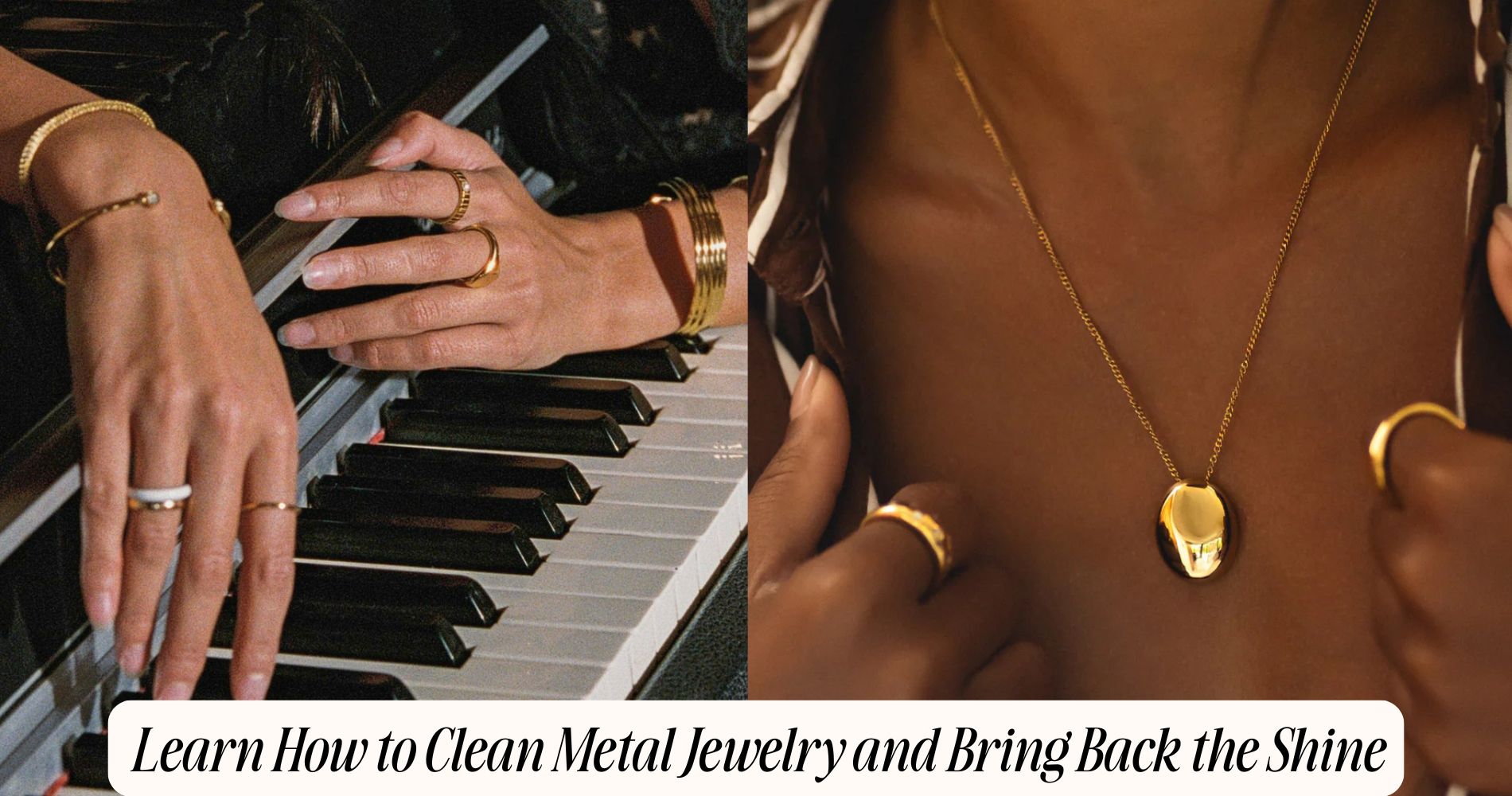
Learn How to Clean Metal Jewelry and Bring Back the Shine
Learning how to clean metal jewelry starts with identifying the metal type. Check hallmarks (karat, 925, PLAT, SS), color, weight, and magnetism—avoid magnetic pieces when dealing with precious metals. For gold and gold-filled items, use warm water with pH-neutral dish soap, a soft brush, and a microfiber cloth for drying. Sterling silver requires a microfiber wipe or treated silver cloth, followed by professional silver polish for heavier tarnish. Steer clear of abrasives, chlorine, and home ultrasonic cleaners. For those who prefer low-maintenance shine, explore Atolea’s Waterproof Jewelry Collection—crafted to stay radiant through daily wear. Always store your pieces dry in soft pouches with anti-tarnish strips, and consult a jeweler for loose stones or deep scratches.
How to Identify Your Metal Before You Clean
Before you reach for any cleaner, confirm exactly what metal you’re dealing with to prevent damage. Start by examining hallmarks using a 10x loupe: look for karat stamps (10K–24K), “925” for sterling, “PLAT” or “950” for platinum, and “SS,” “GP,” “HGE,” or “GF” for plated or filled pieces.
Compare color and luster—yellow, white, or rose tones—and assess weight and magnetism; precious metals aren’t magnetic.
Use controlled testing methods only when markings are absent. Perform a discreet spot test with acid kits rated for specific metal types, following PPE protocols: gloves, eye protection, ventilation.
Confirm stainless grades with a magnet and, if available, XRF analysis at a jeweler. Avoid abrasive scraping on thin plating. Document findings before selecting a compatible, non-reactive cleaning process.
What Causes Tarnish and Discoloration
With the metal correctly identified, you can predict how it will react to air, moisture, and chemicals—and why it changes color.
Tarnish is a surface reaction: silver forms silver sulfide from sulfur compounds, copper alloys form copper oxides and sulfides, and brass can dezincify in acids, leaving a pinkish copper-rich layer.
Nickel and base metals oxidize readily, while stainless steel resists due to chromium oxide passivation.
Primary oxidation causes include humidity, perspiration (salt, urea, lactic acid), sulfur in air and cosmetics, chlorine in pools, and volatile sulfur from rubber, felt, or certain papers.
Skin pH and medications can accelerate reactions.
Apply tarnish prevention tips: store pieces dry and sealed, use anti-tarnish strips, avoid chlorine and sulfur products, remove jewelry during workouts, and handle with clean, dry hands.
Cleaning Solid Gold and Gold-Filled Pieces Safely
Although gold is chemically inert compared to silver or copper alloys, you should still clean solid gold and gold-filled pieces with controlled, non-abrasive methods to preserve luster and plating integrity.
Begin by making a mild bath: warm water plus a few drops of pH-neutral dish soap. Soak gold jewelry for 5–10 minutes, then gently agitate with a soft-bristle brush, focusing on crevices and chain links. Rinse thoroughly in lukewarm water and pat dry with a lint-free microfiber cloth.
Avoid ultrasonic cleaners for gold-filled items and gemstone-set pieces unless a jeweler confirms compatibility. Steer clear of abrasive powders, toothpaste, and ammonia-heavy cleaning solutions that can undercut solder joints or erode gold layers.
Inspect clasps and prongs during cleaning. Store dry pieces separately in soft pouches to minimize friction and prevent micro-scratches.
The Best Way to Polish Sterling Silver
Gold rewards gentle cleaning; sterling silver demands targeted polishing to remove tarnish without thinning the metal.
Begin with a soft, lint-free microfiber cloth to remove loose debris. Then use a treated silver polishing cloth, working in straight strokes, not circles, to avoid hairline abrasion. For heavier tarnish, apply a small amount of professional silver polish; follow the manufacturer’s dwell time, then buff lightly. Keep compounds off gemstones and oxidized details. Rinse with lukewarm water, pat dry, and inspect under bright light.
Choose polishing techniques matched to the finish: high-polish surfaces need minimal pressure; brushed areas require directional strokes. Avoid baking soda pastes, toothpaste, and ultrasonic cleaners on delicate pieces.
For preventive silver care, store items in anti-tarnish pouches with silica gel and wear gloves during handling.
Caring for Stainless Steel and Titanium Jewelry
Because stainless steel and titanium resist corrosion but can still scratch or dull, clean them with a soft microfiber cloth and a mild pH‑neutral soap solution, then rinse thoroughly and dry immediately to prevent water spots.
For stainless steel care, wipe along the grain to minimize microabrasions. Avoid chlorine, bleach, ammonia, and abrasive powders; these can pit passivation layers.
For titanium maintenance, use the same gentle protocol, but note that sandblasted or matte finishes show scuffs—dab, don’t rub aggressively.
Remove body oils with isopropyl alcohol (70%) on a lint‑free pad, then rinse.
Ultrasonic cleaners are generally safe for unstone set pieces; skip them if gems or adhesives are present.
Store pieces separately in soft pouches to prevent contact wear.
Inspect clasps and threads periodically and tighten with appropriate torque.
Gentle Methods for Gold-Plated and Vermeil Items
Even a thin layer of plated gold or vermeil can wear quickly, so handle these pieces with minimal friction and moisture.
For gentle cleaning, mix a few drops of pH-neutral dish soap in lukewarm water. Dip a soft, lint-free cloth in the solution, then wipe the surface with light pressure. Don’t soak; prolonged immersion can undermine gold plating adhesion. Use a new, ultra-soft baby toothbrush only for crevices, keeping strokes minimal and unidirectional.
Rinse briefly under a trickle of cool water, shielding the item with your palm to prevent drops from abrading the finish. Pat dry immediately with a microfiber cloth; avoid rubbing.
Skip ultrasonic cleaners, polishing compounds, and abrasive pastes. If tarnish persists on vermeil, consult a professional to preserve plating integrity.
Everyday Maintenance and Storage Tips
Handle freshly cleaned pieces with the same restraint you used for plated and vermeil items.
Dry thoroughly with a lint-free microfiber cloth, then let metal reach room temperature before storing.
Establish a maintenance routine: after each wear, remove fingerprints, sweat, and cosmetic residue; once weekly, inspect clasps, jump rings, and prongs for looseness; monthly, check for early tarnish and address promptly.
Choose storage solutions that control humidity and abrasion.
Use individual soft pouches or lined compartments; separate metals to prevent galvanic corrosion and color transfer.
Add silica gel or anti-tarnish strips to closed boxes, and keep relative humidity below 50%.
Store chains fastened and laid flat to prevent kinks; hang only sturdy pieces.
Avoid bathrooms, window sills, and direct sunlight.
Apply fragrance, lotion, and sunscreen before jewelry.
When to Seek Professional Care and Repairs
When routine care won’t resolve an issue, defer to a professional jeweler to prevent irreversible damage.
Seek help if you notice loose stones, bent prongs, stretched chains, thinning shanks, cracked solder seams, or deep scratches that trap debris. Stop wearing items with sharp edges or instability to avoid stone loss and skin injury.
Use professional cleaning services for heavily tarnished silver, oxidized crevices, or pieces with fragile settings, enamel, or inlays.
Avoid home ultrasonic or steam units when gemstones are porous, heat-sensitive, fractured, or filled. Request inspection, tightening, re-tipping, re-soldering, polishing, and accurate stone setting as needed.
For heirlooms and complex alloys, choose a bench jeweler experienced in repairing damaged pieces and matching finishes.
Always obtain an estimate, timeline, and post-repair care guidance.
Frequently Asked Questions
Can Ultrasonic Cleaners Damage Delicate Gemstones Set in Metal Jewelry?
Yes. You can damage delicate stones; ultrasonic cleaner risks include fractures, loosened settings, and clouding. Evaluate gemstone durability: avoid opal, emerald, pearl, turquoise; inspect mounts; use mild hand-cleaning instead; consult a jeweler before any ultrasonic treatment.
Is It Safe to Clean Jewelry With Enamel or Patina Finishes?
Yes, but only with strict precautions. For enamel care, avoid abrasives, acids, ultrasonics, and heat; use mild soap, lukewarm water, soft brush. For patina preservation, skip polishes; wipe gently, dry thoroughly, store separately, and consult a conservator for damage.
How Do I Remove Odors From Vintage Metal Jewelry Without Discoloration?
Use sealed baking soda or activated charcoal for odor removal: place vintage jewelry in a vented container nearby 24–48 hours. Avoid liquids, acids, and perfumes. If safe, wipe with ethanol on cotton swab; dry thoroughly, ventilate storage.
What Cleaning Methods Are Travel-Friendly for On-The-Go Maintenance?
Use travel kits with pH-balanced portable wipes, a soft microfiber cloth, and a small blower brush. You’ll spot-clean fingerprints, oils, and dust safely. Avoid abrasives, ammonia, and soaking. Dry immediately; store pieces in individual, anti-tarnish pouches.
Are Eco-Friendly, Fragrance-Free Cleaners Effective for Sensitive Skin Users?
Yes. You’ll find eco friendly ingredients and fragrance free options effective for sensitive skin. Choose dye-free, hypoallergenic, non-irritating surfactants; avoid essential oils, alcohols, and harsh acids. Patch-test, rinse thoroughly, and dry completely to minimize residue and contact dermatitis.
Conclusion
You’ve got the tools to clean smart and protect your jewelry’s finish. Always identify the metal, test in an inconspicuous spot, and follow metal-specific methods: nonabrasive agents for gold, proper silver polish for sterling, and mild detergents for stainless steel or titanium. Treat plated and vermeil pieces with minimal friction. Rinse thoroughly, dry completely, and store with anti-tarnish controls. If stones are loose, settings compromised, or finishes damaged, stop and consult a professional bench jeweler.







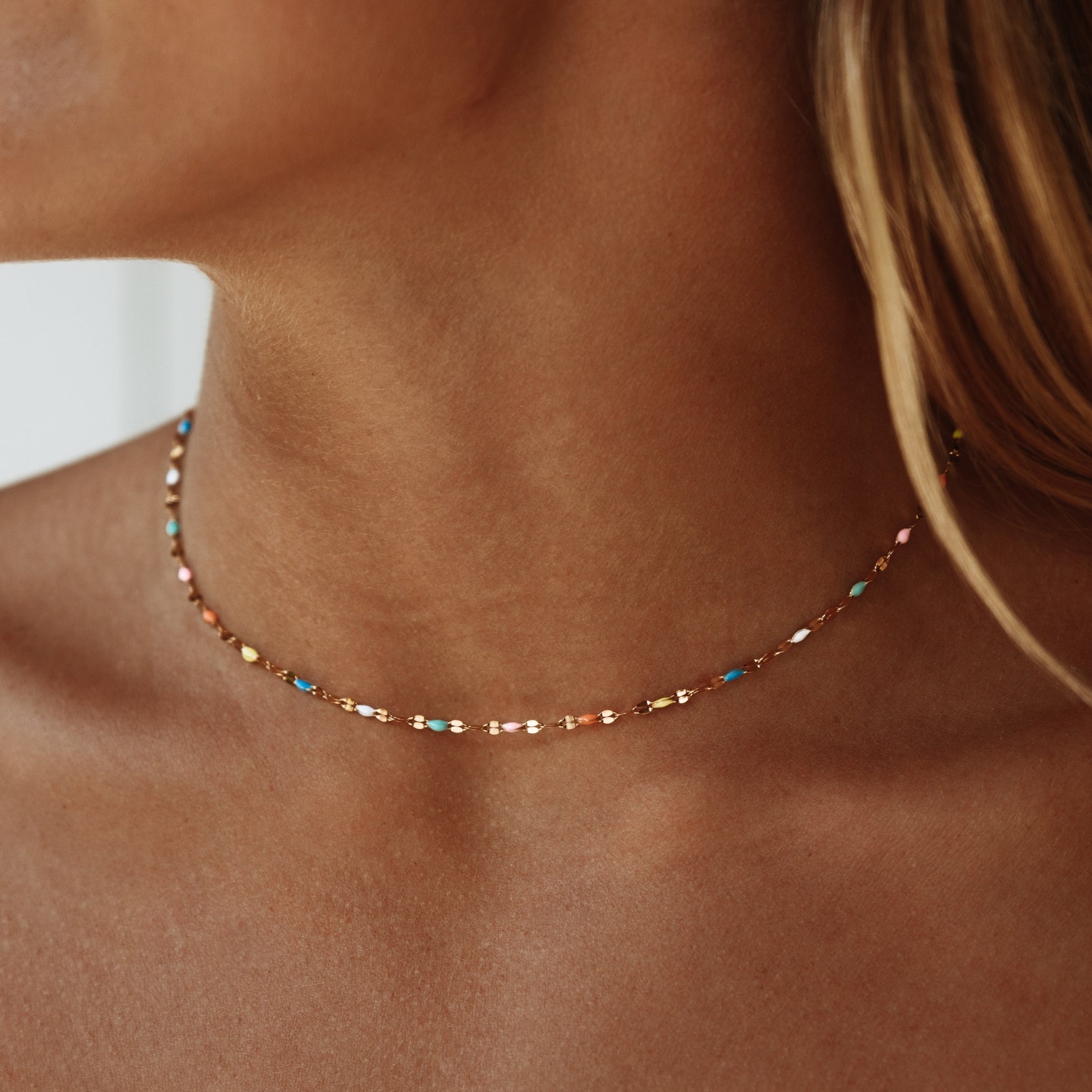
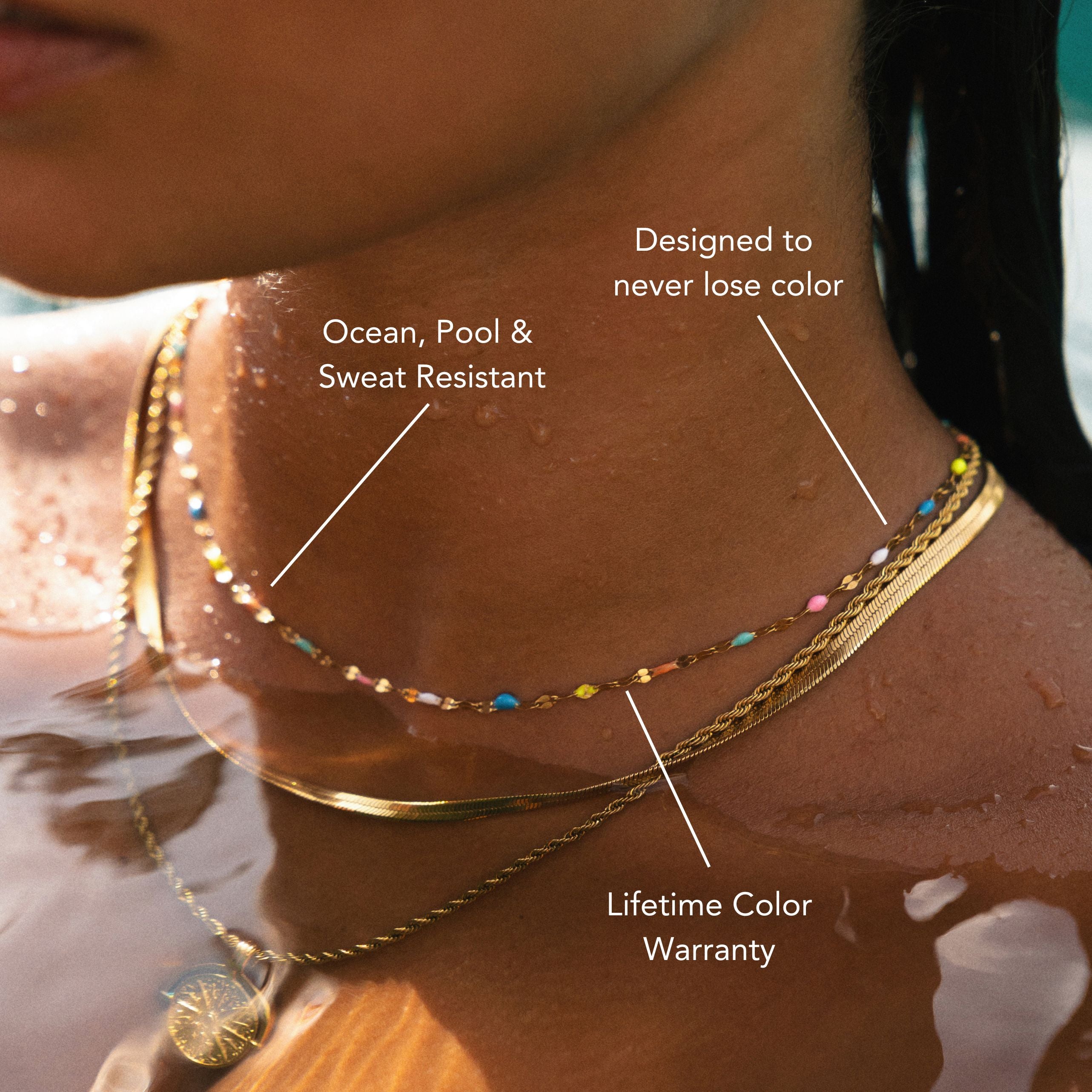
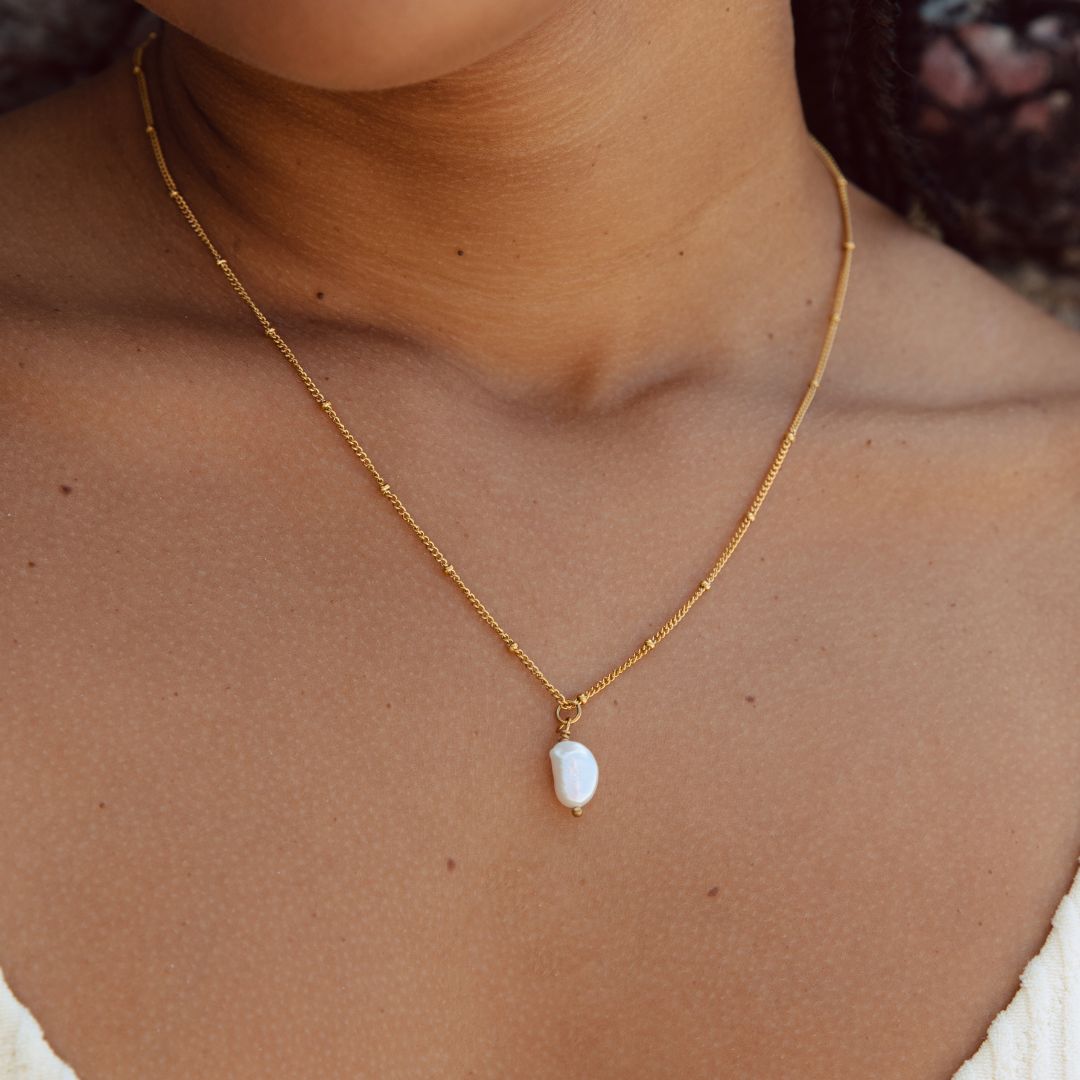

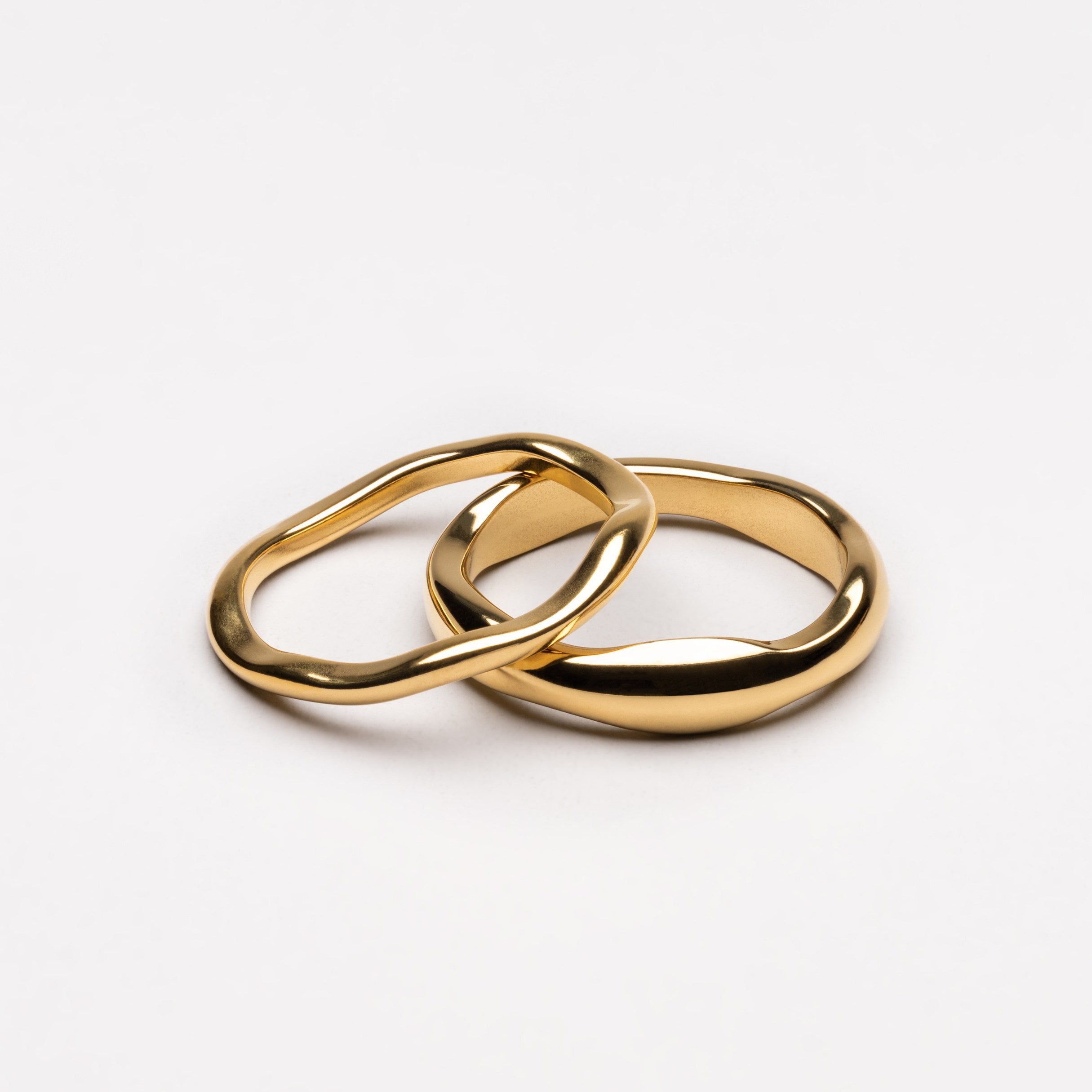

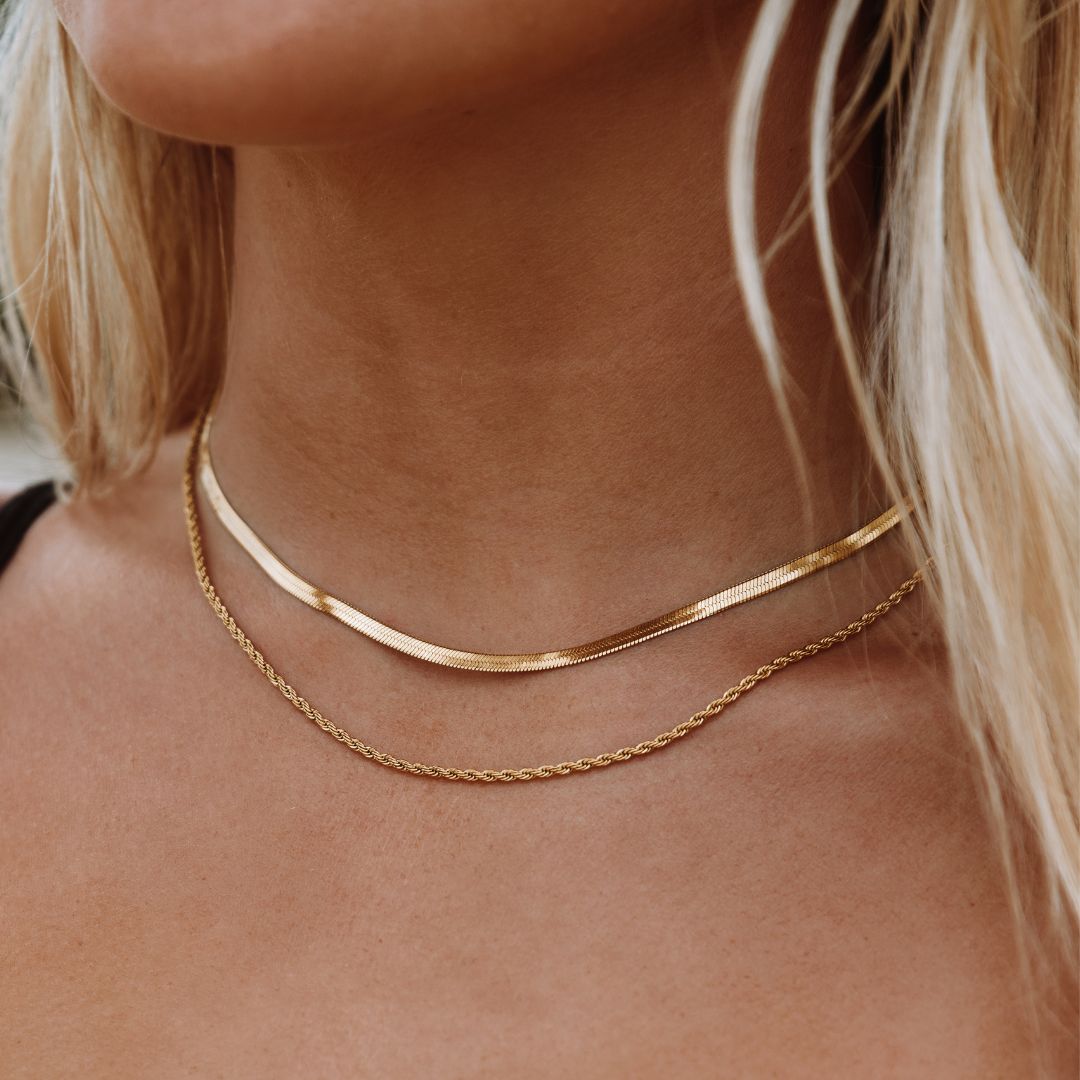
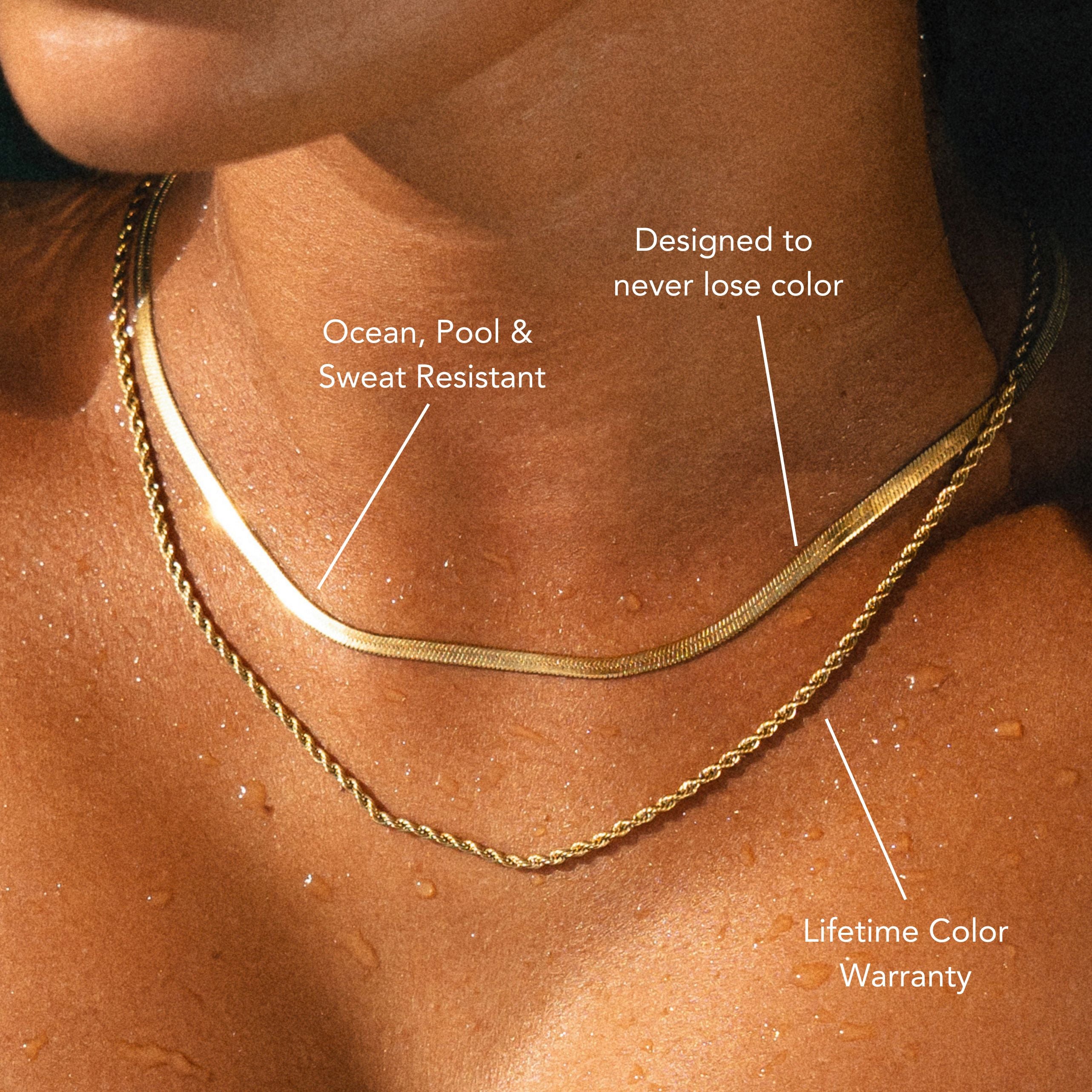
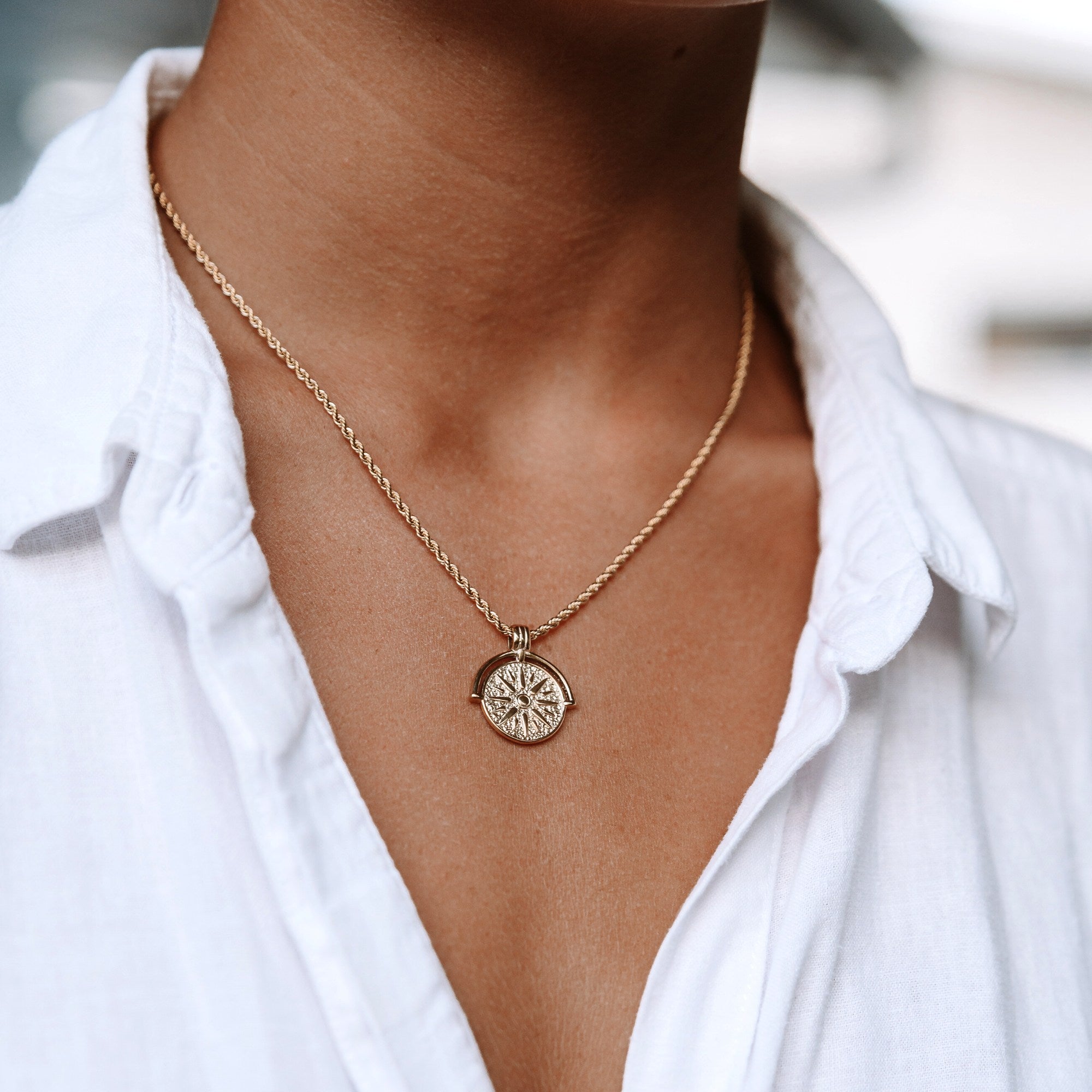
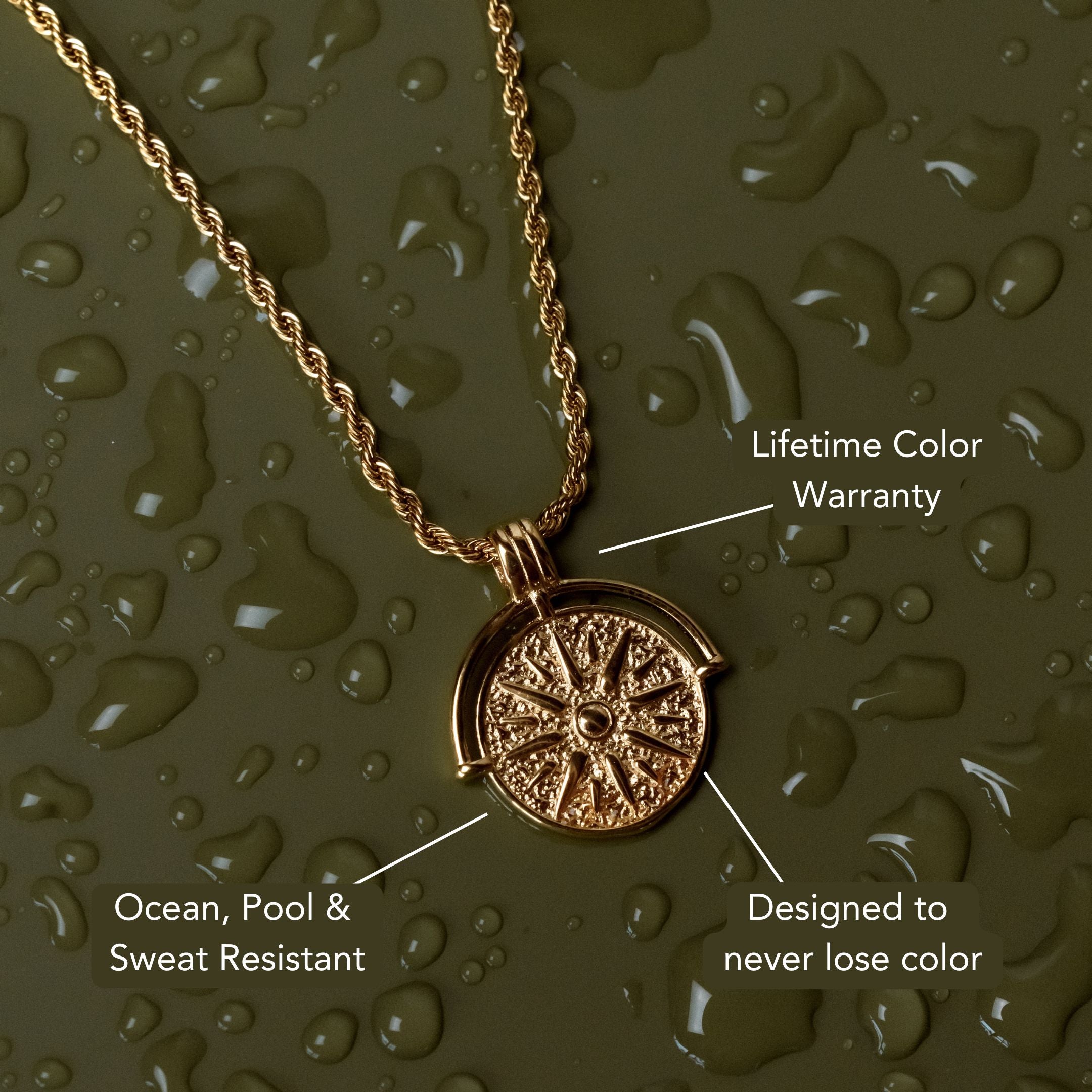






Leave a comment
This site is protected by hCaptcha and the hCaptcha Privacy Policy and Terms of Service apply.